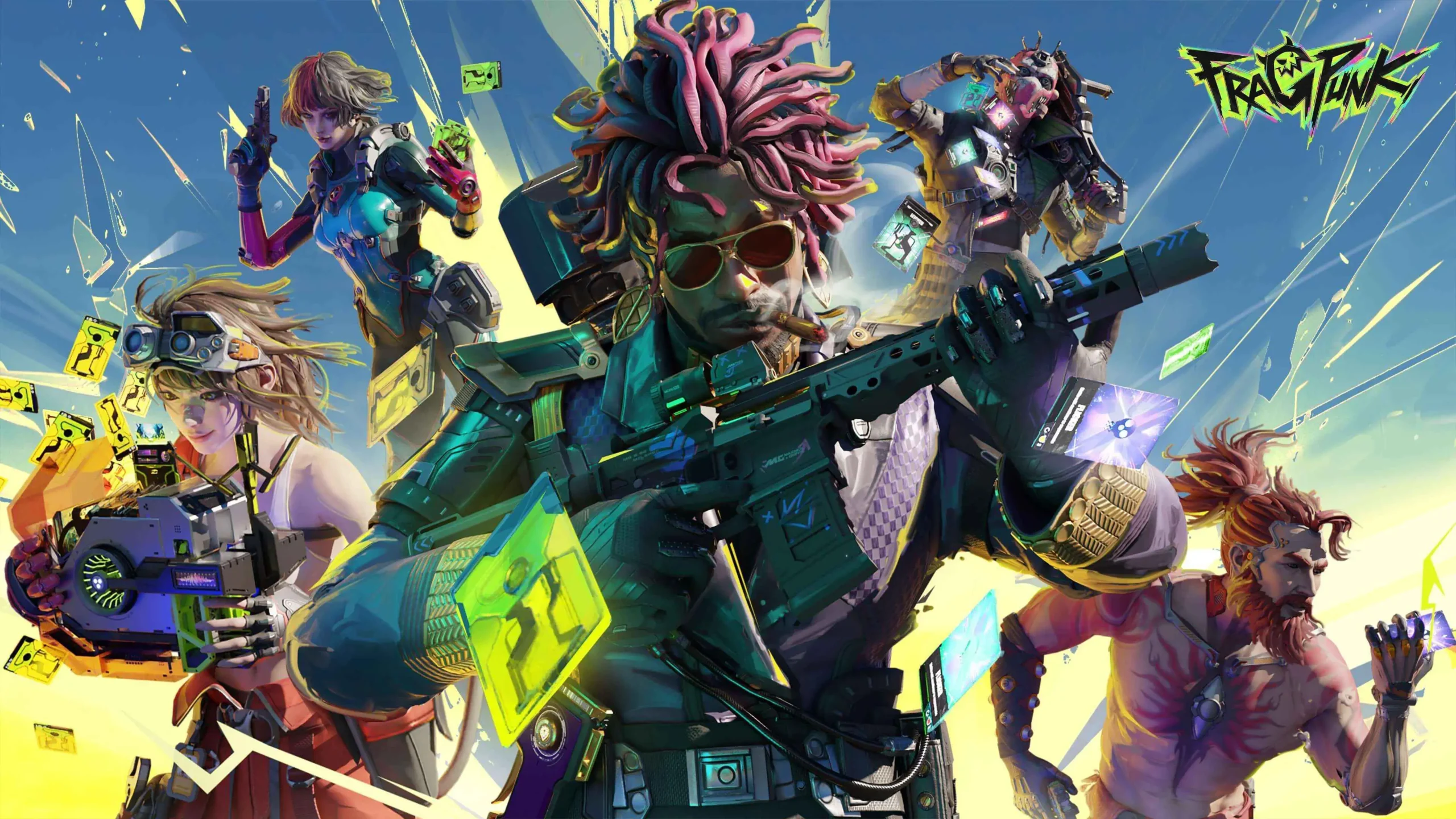In an era where every new game is preceded by a flood of trailers, behind-the-scenes content, and detailed previews, it’s rare for anything to feel genuinely unexpected—especially for seasoned players of multiplayer shooters. But FragPunk manages to defy expectations. Initially, it might appear to be another hero-based shooter borrowing from familiar trends, complete with a flashy card mechanic and other buzzworthy features. However, it quickly reveals itself as something far more inventive. Still, a convoluted reward and currency system tends to dilute the enjoyment of progression and customization.
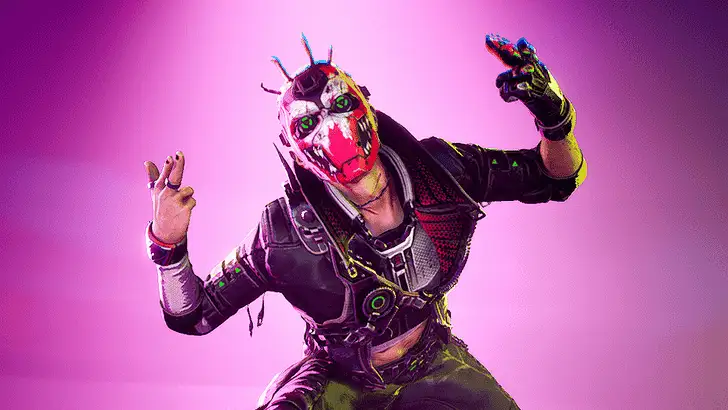
Familiar Foundations With a Fresh Perspective
FragPunk plays like a Frankenstein’s monster of modern shooters—drawing from various inspirations yet somehow creating something all its own. It features colorful, distinctive characters known as Lancers, each with their own flair and abilities. Players familiar with team-based tactical games will recognize the format: two squads of five face off in Shard Clash, aiming to either plant or defuse a Converter or wipe out the enemy team across several rounds. Meanwhile, a robust catalog of unlockable cosmetics encourages monetization in this free-to-play setup.
The Lancer lineup includes both standard archetypes and wildly inventive ones. One example is Hollowpoint, a sniper with recon-focused abilities. On the opposite end of the spectrum is Axon, a punk-themed rocker who weaponizes lightning through his guitar. FragPunk differs from some tactical shooters by placing a strong emphasis on ability usage during fights. Tools like Broker’s explosive launcher can shift the tide instantly, while Nitro’s defensive shield wall and drone combo provide effective counters when used strategically.
Though the core of the gameplay rests on familiar weaponry—shotguns, SMGs, assault rifles—the shooting itself isn’t the primary attraction. Only two options are available per weapon type, and they generally handle as expected. However, movement and positioning hold more weight than pure aiming skills, and the gunplay feels fluid and responsive, offering a smooth combat experience.
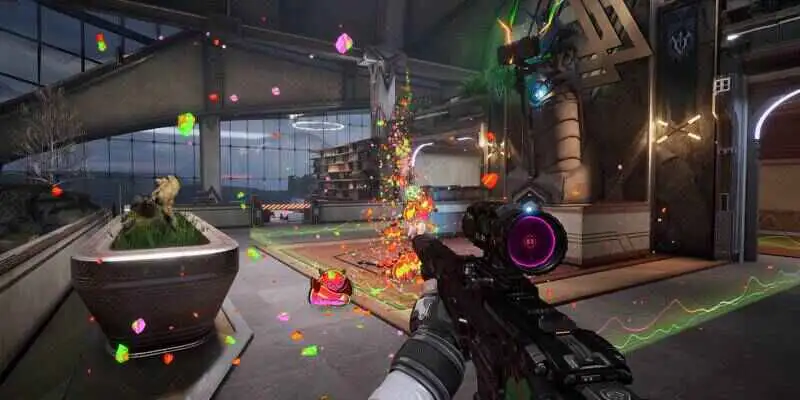
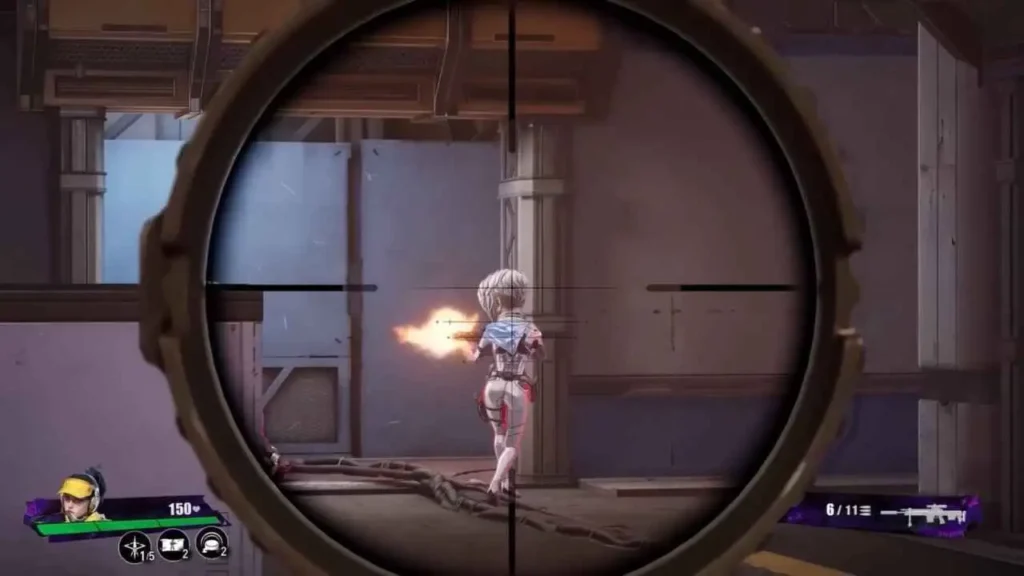
Where FragPunk separates itself most from other tactical shooters is its leniency toward mobility. A teammate once suggested that players will perform better by embracing a more aggressive, run-and-gun playstyle, treating the game more like a powered-up arcade shooter. This advice proved valuable, leading to improved performance and making clear that FragPunk has carved out its own kinetic identity. This high-mobility approach is somewhat atypical for an objective-based game, but it meshes well with the title’s energetic tone.
The Wild Mechanics of Shard Cards
At the center of FragPunk’s unique charm is its Shard Card system. Before each round, teams are presented with three randomly selected cards. Players spend Shard Points to activate these effects, with the cost of each varying based on its impact. Shard Points are earned through eliminations or found on the battlefield during rounds.
The cards themselves range from simple boosts, like increased speed, to wildly transformative ones. Some introduce melee-only rounds, while others humorously modify gameplay—such as enlarging opponents’ heads for easier targeting. Then there are truly offbeat examples, like a card that causes characters to lay eggs after crouching for a set time, which can be consumed for healing. These elements are surreal and inventive, making each match feel unpredictable and entertaining.
Surprisingly, the process of collecting new Shard Cards becomes one of the most compelling aspects of the game. With fewer than a third of the total 169 cards available from the start, new additions are earned by completing matches. Since each round draws from every team member’s unlocked cards, the excitement of discovering new possibilities is constant. The system is supported by a well-organized collection interface that includes descriptions and even preview videos for many effects.
High-Speed Matches and Tactical Imbalance
Despite the strategic potential of the objectives, most rounds conclude quickly through team eliminations. While the official goal is to plant or defuse the Converter, the actual gameplay often resembles a high-speed brawl. This fast pace means that more nuanced Lancers, who rely on setup and defense, frequently get sidelined as the action rushes past them. Ideally, some balance updates will eventually give strategic play a greater role.
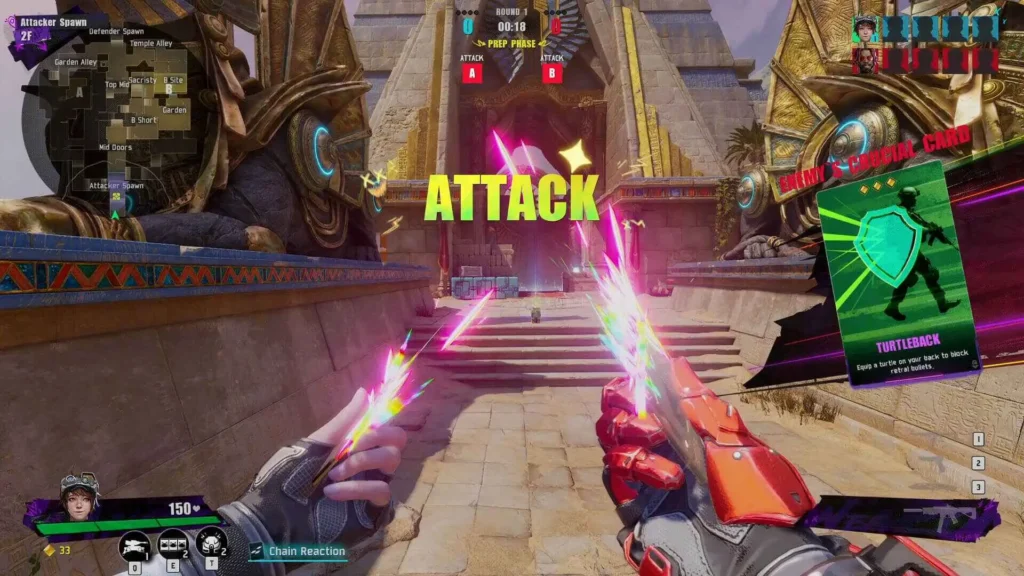
When both teams reach three round wins, FragPunk introduces a dramatic shift with the Duel finale. Here, players engage in sequential 1v1 battles, and each victory determines who advances. Since health and abilities don’t regenerate between rounds, it’s rare for a single player to dominate the entire Duel. The tension is palpable, and watching teammates compete while waiting for a turn adds a unique layer of excitement. Securing a win during this finale can be immensely satisfying, especially when it clinches the match.
Ranked Progression and Its Frustrations
Players must reach level 30 before entering ranked matches, a process that can take nearly 10 hours. By then, the novelty of unranked games may start to wear thin. Ranked Shard Clash plays similarly to its casual counterpart, but requires six wins to secure victory. Unfortunately, the randomized nature of Shard Cards sometimes introduces frustrating variability in these higher-stakes games. At the Diamond rank, a more advanced version of Shard Clash becomes available, allowing for card selection and bans—a system that arguably should have been standard in ranked from the beginning.
Secondary Modes With Limited Appeal
Several additional game modes offer brief diversions. Standard Deathmatch helps sharpen shooting skills, while Duel Master serves as training for Duel finales—though without the context of a larger match, it loses its dramatic edge. Outbreak stands out as an experimental mode where a few players begin as zombies and attempt to convert the rest. While creative, this mode suffers from long match lengths and poor balance, making it more frustrating than fun.
A Cluttered and Underwhelming Cosmetic System
Like many free-to-play titles, FragPunk relies on cosmetic purchases for monetization. Unfortunately, the experience of earning or buying these rewards is marred by a confusing and excessive currency system. Players must navigate through multiple in-game currencies—Gold, Glunite, FragPunk Coins, Battle Pass Tokens, Ranking Coins, Club Supplies, and more. Each currency corresponds to a different catalog of items, creating a bloated system that lacks clarity and cohesion.
Worse still, many of the cosmetic options feel uninspired. While Gold is the most commonly earned resource, its value is undercut by the randomness of what it can buy—like stickers and minor weapon decorations. Unlocking new Lancers with Gold takes an inordinate amount of time, subtly encouraging players to spend real money instead. When unlocking a single Lancer takes about 10 hours, the $10 price tag for immediate access becomes difficult to ignore.
Even the battle pass leaves much to be desired. The free tier of the 60-level pass includes minimal rewards, while the premium version offers basic skins and randomized trinkets. An even pricier “Ultimate” tier adds few meaningful bonuses, mostly doubling some reward chances and offering marginally better cosmetics. Considering its $25 cost, the value simply doesn’t justify the price.
Final Verdict
FragPunk thrives when players are in the thick of its action-packed, chaotic matches. The Shard Card system adds endless variety, keeping each round fresh and engaging. However, its overloaded and poorly structured economy drags down the long-term appeal, offering little incentive to stick around once the thrill of combat fades. For those who love the moment-to-moment excitement, FragPunk has plenty to offer—but unless its reward systems see serious revision, it may struggle to maintain its momentum.
